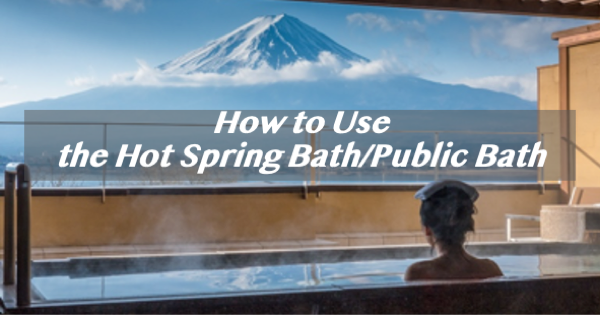Hot springs have been used in Japan since ancient times. Japanese people are described as having a “love of baths”. Bathtubs are standard in most homes, hotels, and ryokans, and people take baths every day to wash off their sweat and dust. At the large baths and open-air baths at ryokans and hotels, hot spring facilities, and public baths, taking baths in spacious bathtubs filled with hot spring water can provide guests with a more refreshing feeling than bathing at home. To have the best bathing experience, be sure to learn how to use Japanese public baths (hot springs, large baths, public baths, etc.) and any precautions you may need to take.
★Bathing naked
Bathing completely naked is considered an etiquette in Japanese hot springs. Of course, there are hot spring baths with mixed baths, private baths, and facilities where swimsuit is permitted, but in most public baths in Japan, men and women bathe separately and without clothes. If you are uncomfortable using the baths with strangers, please use the bath in your room.

◆Things to know before taking a bath
1. Be careful not to strain your body
Avoid bathing on an empty stomach, immediately after eating, or after drinking alcohol. Elderly people, people with high blood pressure, or heart disease, or those who have had a stroke in the past should avoid bathing at temperatures above 42°C.
For people with weak cardiopulmonary functions, half-body bathing or partial bathing is recommended. When getting out of the bathtub, do so slowly to avoid getting dizzy.
2. Do not take a bath for too long
Take a bath once or twice a day, depending on the bath temperature, but take a gentle bath for about 3 to 10 minutes each time, making sure to move your hands and feet slightly.
3. Make sure to stay hydrated
To avoid dehydration, drink a glass of water before and after bathing.
◆Bathing etiquette
– Those with tattoos are not allowed to bathe.
*Rules vary depending on the facility. In some cases, it may be possible by hiding it with a bathrobe or sticker.
– Do not wear swimsuits or underwear when entering the bathtub.
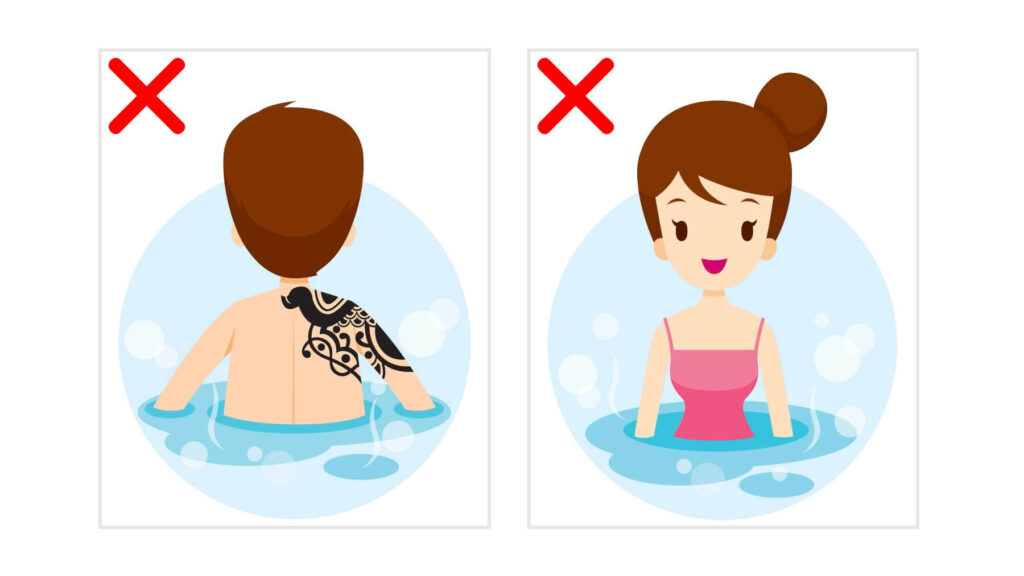
– To maintain cleanliness, please do not put towels in the bathtub.
– Tie your hair up if it is long and be careful not to let it fall into the bathtub.
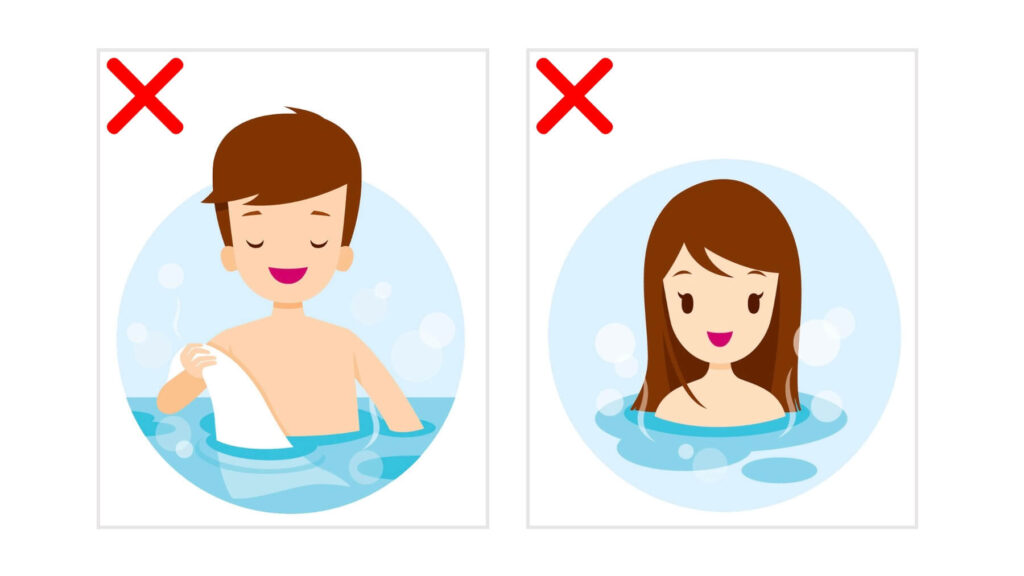
– Do not swim, jump, or dive in the bathtub.
– The use of swimming equipment such as floats, balls, and toys are also prohibited.
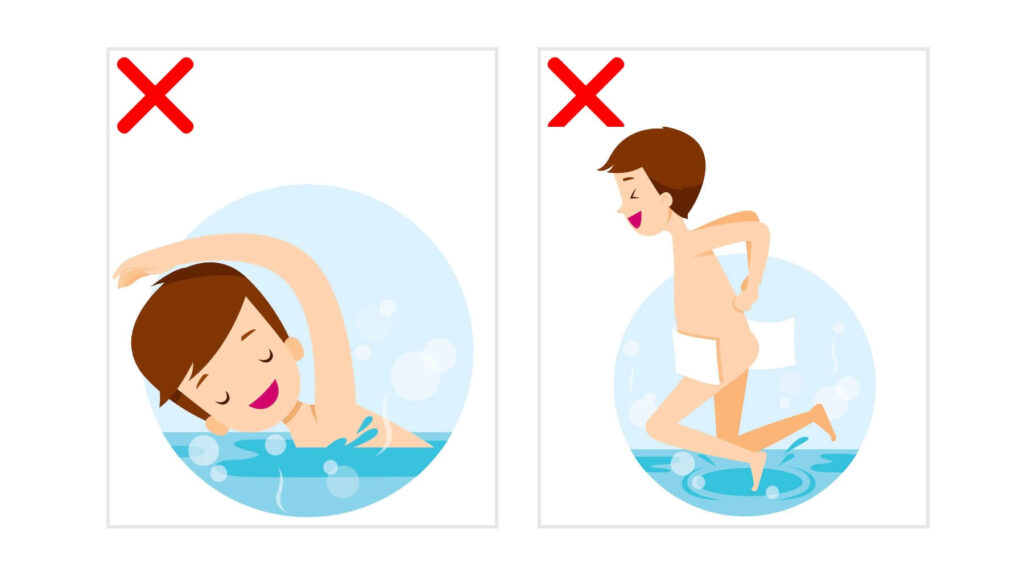
– Please avoid loud conversations and bathe quietly.
– To prevent voyeurism, the use of smartphones is prohibited, including the changing rooms.
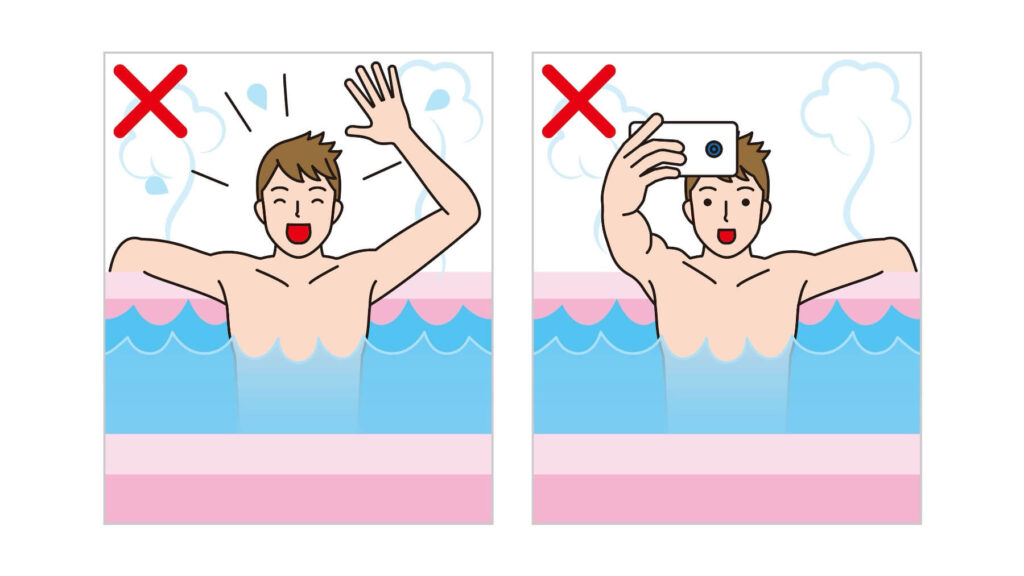
– Do not scrub your body or wash your hair in the bathtub.

– Even if the water temperature is high, do not dilute it with cold water.
– Please refrain from doing anything other than washing your body and hair in the shower area (washing clothes, dyeing your hair, etc.).
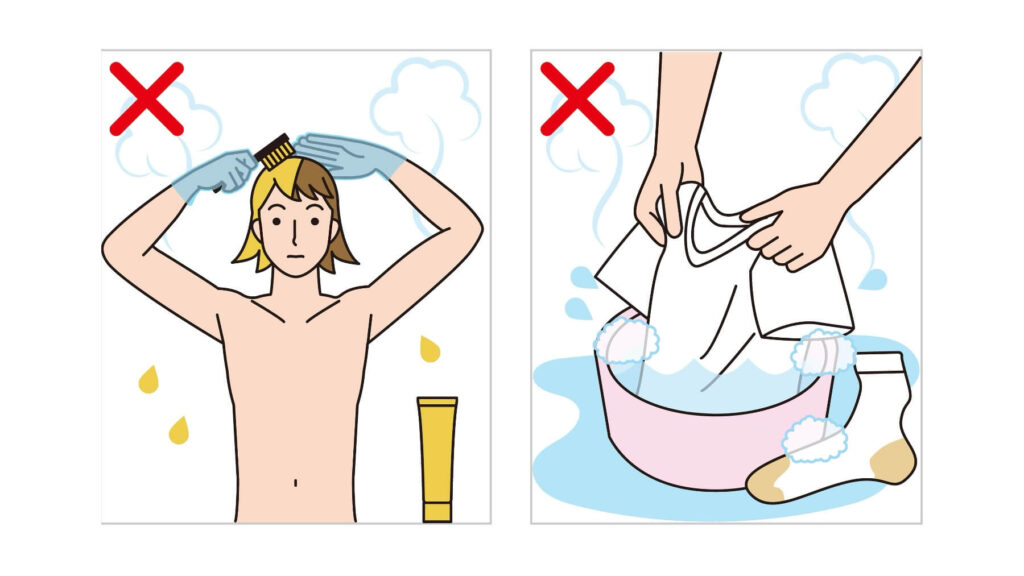
◆Things to bring
At a ryokan, supplies such as shampoo, conditioner, body soap, and combs are usually provided in the bathhouse. Please bring the face towel, bath towel, and yukata provided in your room. You do not need to bring towels from your room if the facility provides free-use towels at the bathhouse.
Unlike ryokans, amenities such as slippers, bathrobes, and nightgowns can only be used in the guest room in hotels. Please follow the hotel’s regulations regarding what to wear and what to bring to the public bath. In addition, hot springs and public baths may not have storage space with locks, so please do not take any valuables with you.
◆How to bathe
1) Enter the changing room barefoot
If you are staying at a ryokan, put on your slippers from your room to go to the public bath. Take off your slippers at the entrance, arrange them neatly on the floor or place them on the shoe rack, and enter the changing room barefoot. If you wish to wear your slippers when you leave, please place them a little apart from other guests’ slippers or mark them with a number tag or notepad provided by the ryokan so you know which pair is yours.

2) Take off your clothes in the changing room and take a shower
There are baskets and lockers for storing your clothes in the changing room. Put your clothes in the basket and cover the basket with a bath towel. This way, no one else can see inside the basket, and you can use the bath towel immediately after bathing. Have the bath towel with you and enter the bathhouse.

3) Shower and hot water
Be sure to wash your body thoroughly before entering the bathtub. Please sit on a chair and when taking a shower. Shampoo, conditioner, body soap, and face wash are generally provided. Makeup remover may also be placed at the sink in the changing room. After washing your whole body in the shower, use a “yuoke”” bucket to “rinse” your body from the ends of your body to your head to let your body adjust to the water temperature. *The spaces with the “yuoke” bucket placed upside down on the chair are vacant spaces. After using the chair, clean the chair and the “yuoke” bucket to make sure there is no soap left and return them to their original state. If you don’t need to take a shower, such as when taking a second bath on the same day, use the pail placed near the bathtub to pour hot water over your body before entering the bathtub.

4) Bathing
Step into the bathtub gently and begin by taking a “half-body bath”, where you soak the bottom half of the body (under the chest). After getting used to the temperature, take a “full body bath” and promote blood circulation by floating your body and gently moving your limbs. Get out of the bathtub when your forehead starts to sweat. To maintain the effect of the bath, do not wash your body off. If you have sensitive skin, it is better to wash away the hot spring water with warm water.
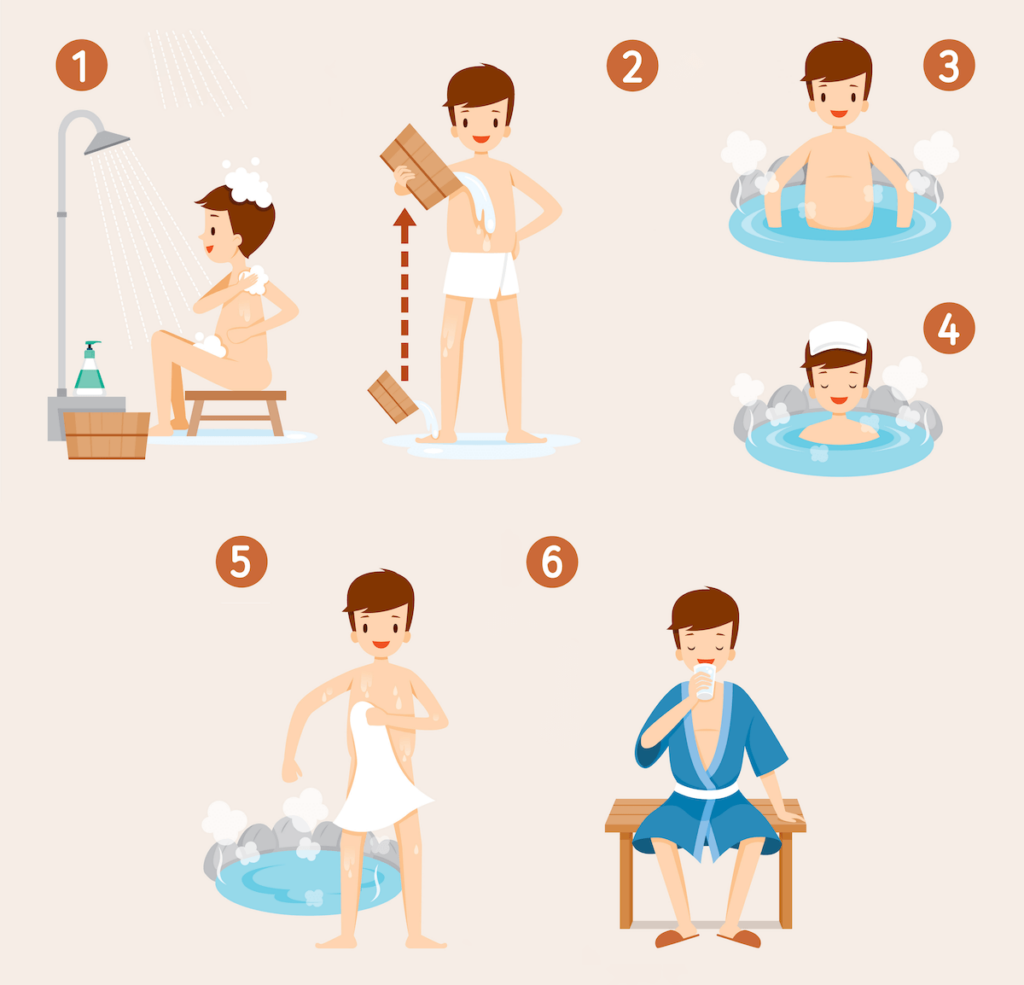
★Things to keep in mind after bathing
– Be sure to keep yourself warm, and clothed, and rest for about 30 minutes.
– Make sure to stay hydrated to prevent dehydration.
This is the introduction to how to enter Japanese hot springs and public baths. Know the customs and etiquette in advance and enjoy bathing comfortably.
